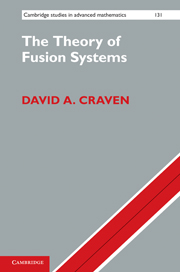2 - Fusion in representation theory
Published online by Cambridge University Press: 05 August 2012
Summary
Modular representation theory has two major facets: module theory and block theory. Every p-block of a finite group has a fusion system attached to it, and it turns out that this fusion system is saturated. Even to get to the point where we are able to define the fusion system of a block takes us on a whistle-stop tour of modular representation theory.
We begin in the first section by defining the concept of a p-block of a finite group: a p-block of a group is an indecomposable two-sided ideal summand of the group algebra kG, where k is an algebraically closed field of characteristic p. After examining their properties and developing some theory, we move on to the Brauer morphism and relative traces. The Brauer morphism BrP is of fundamental importance, and allows us to pass from groups to centralizers (and normalizers) of p-subgroups. Relative traces are a useful tool for proving results about blocks, and we will use them extensively here.
Armed with these tools, we define and study Brauer pairs in Section 2.3. These will form the elements of the fusion system of a block. A Brauer pair is a pair (P, e), where P is a p-subgroup of G and e is a block idempotent of k CG(P). We deal with conjugation and inclusion of Brauer pairs, which are needed to define a fusion structure on them.
- Type
- Chapter
- Information
- The Theory of Fusion SystemsAn Algebraic Approach, pp. 26 - 54Publisher: Cambridge University PressPrint publication year: 2011

